Thread subject: Diptera.info :: Aussie fly
Posted by Guest on 25-11-2005 08:48
#1
Posted on behalf of Eric Van Esch:
Hi Guys,
Can you point me in the right direction or forward the pic to the appropriate people. I have asked around (even some old people) and searched the web but can't find any information regarding this "the spotted fly" Nobody seems to have seen it before. Please see attached pic.
Any information would be appreciated.
When: September 05 (Spring)
Where: Yallingup West Australia
The size was approx 10mm
regards Eric
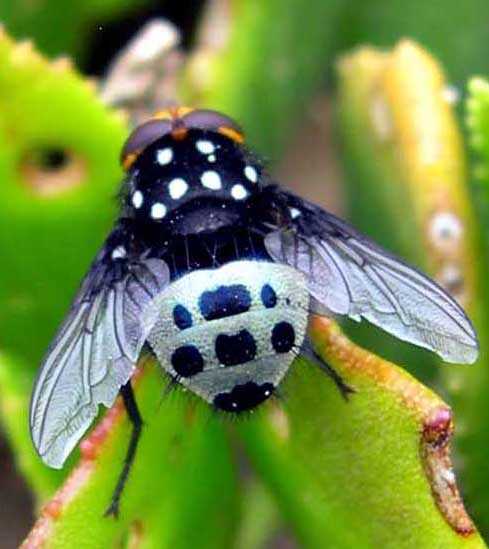
Posted by Paul Beuk on 25-11-2005 10:35
#2
I think it may be a species of
Amenia, a blow fly of the family Calliphoridae. Similar flies are depicted on these two sites:
http://www-person...lliph3.htm
http://www.geocit...oridae.htm
The latter site mentions the genus onder the name 'Snail Parasite Blowfly'.
Posted by Zeegers on 25-11-2005 21:52
#3
Halleluja, what a beauty !!!
I have a very similar specimen from Australia and....
It's a Tachinid !!
From the tribe Ruteliini, exclusively Australian, well loved for the very large and beautiful species.
The beach-babes of Tachinids, so to speak.
Thanks
Theo Zeegers
Posted by Nikita Vikhrev on 25-11-2005 23:26
#4
Thank you Theo. Few time ago I formulated for myself the difference: if M curved at angle less than 90 - Tachinidae, if 90 or more degree - not Tachinidae. If this wonderfull fly wasn't Tachinida it requires formulate some another rule...
Posted by lynkos on 26-11-2005 08:56
#5
Ever ready to learn a good rule... but what exactly would "M" be? Blushing for my ignorance, Sarah
Posted by Nikita Vikhrev on 26-11-2005 09:27
#6
Hi Sarah.
1. Let me use this opportunity to tell you that during the time we are both members of Diptera.info the quality of your images obviosly and fast grow up. And your ignorance in reality is much less than you use to say.
2. About rule. M is first vein after last R. To be sure that it is M you have to find small rm crossvein. Important is only angle in very place where just M begin curved after bieng almost stright before.
I hope you understand my bad English...
Posted by lynkos on 26-11-2005 09:38
#7
Thanks for the compliment ;). As for the Ms, Rs and rms... I'll have to think about it a bit :D. I'm sure it's not as complicated as it seems and if I saw the two sorts of structure side by side I'd see the difference straight away! Sarah
Posted by Nikita Vikhrev on 26-11-2005 09:52
#8
I don't know how to explain myself. On the picture angle looks more than 90, but I think that realy it is 85.
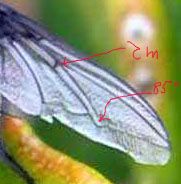
Posted by Zeegers on 26-11-2005 11:28
#9
Hi Nikita,
Your observation on the angle of the bend in vein M is, very generally speaking, correct. However, their might be up to 20 % exceptions.
Exorista (Tachinidae), for example, resemble Sarcophaga.
And beware: rule of thumbs often do not apply to Australia !
Theo
Posted by Nikita Vikhrev on 26-11-2005 13:54
#10
Hi Theo, thank you.
But if I formulate it as:
If it is not Phasia, vein M START TO CURVE in angle less than 90. START TO CURVE = place very near to point where M stop to be straight.
As illustration Exorista sp. added (kindly identified by Theo Zeegers:D).
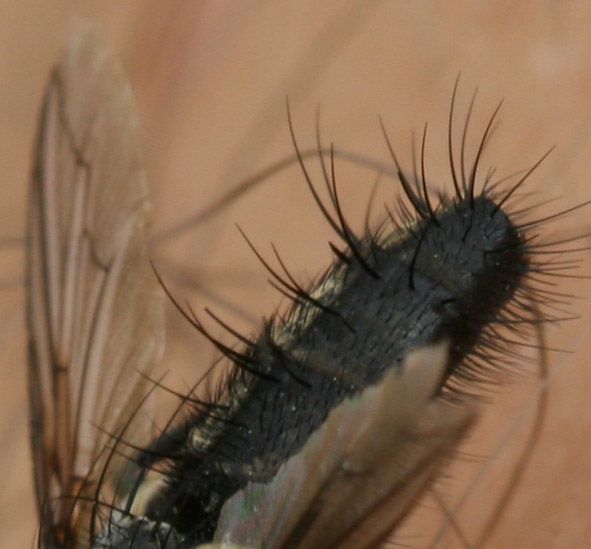
Posted by lynkos on 26-11-2005 16:30
#11
Great stuff! Something is beginning to sink in ;). Sarah
Posted by Zeegers on 27-11-2005 14:59
#12
Hi Nikita,
It seems I have misunderstood you.
Very generally speaking, in Tachinidae the angle in vein M is more obtuse than in most calliphoridae / sarcophigidae. See picture of Cynomyia (Calliphoridae).
There are many exceptions, Exorista being one of them.
So please don't use this feature alone !
The other rule of thumb: arista bare implies Tachinidae or Sarcophagidae Milogramminae, is much more reliable.
Theo
Posted by Zeegers on 27-11-2005 15:00
#13
For some reason, the picture doesn't show.
Second and last try
Theo
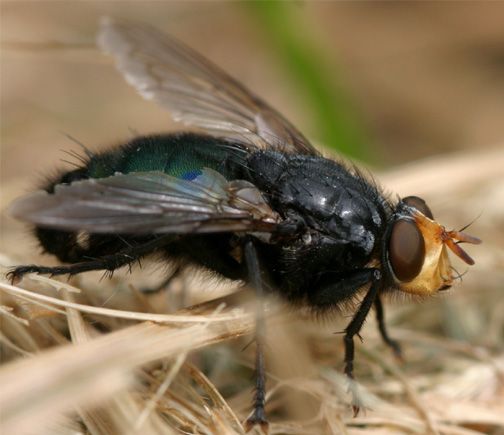
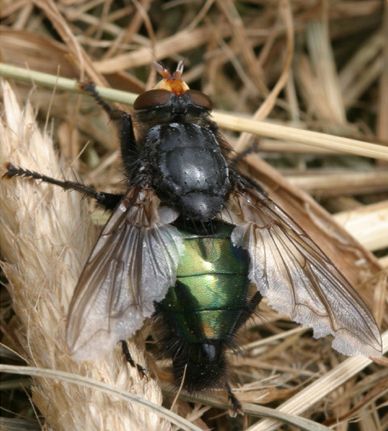
Posted by Nikita Vikhrev on 27-11-2005 15:26
#14
I have to agree.
Thank you Theo.




